A braking system applies the brakes during a breakaway event. It can also apply brakes during heavy braking if it's set up to do so.
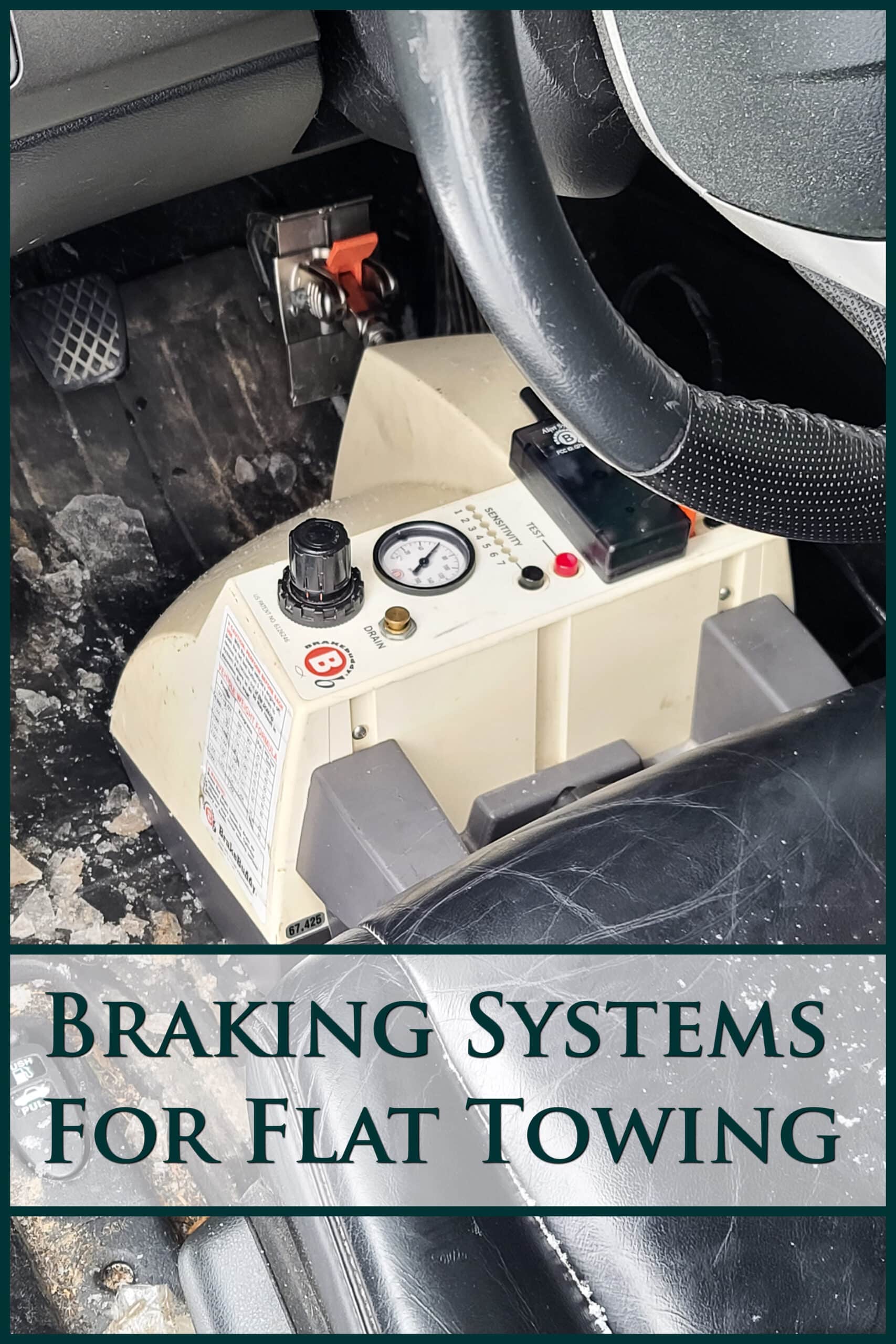
I'm going to focus on portable systems to tow a vehicle behind an RV, sometimes referred to as dinghy towing. These are simple to install, easy to swap over to a new RV or tow vehicle, and generally a reasonable cost.
What does a braking system for flat towing actually do?
These systems add supplemental brakes to your towing vehicle by pushing on the towed vehicle’s brake pedal. You might hear a towed vehicle referred to as a toad. The device is installed and removed in minutes, and really makes a big difference in your stopping distance of your RV rig.
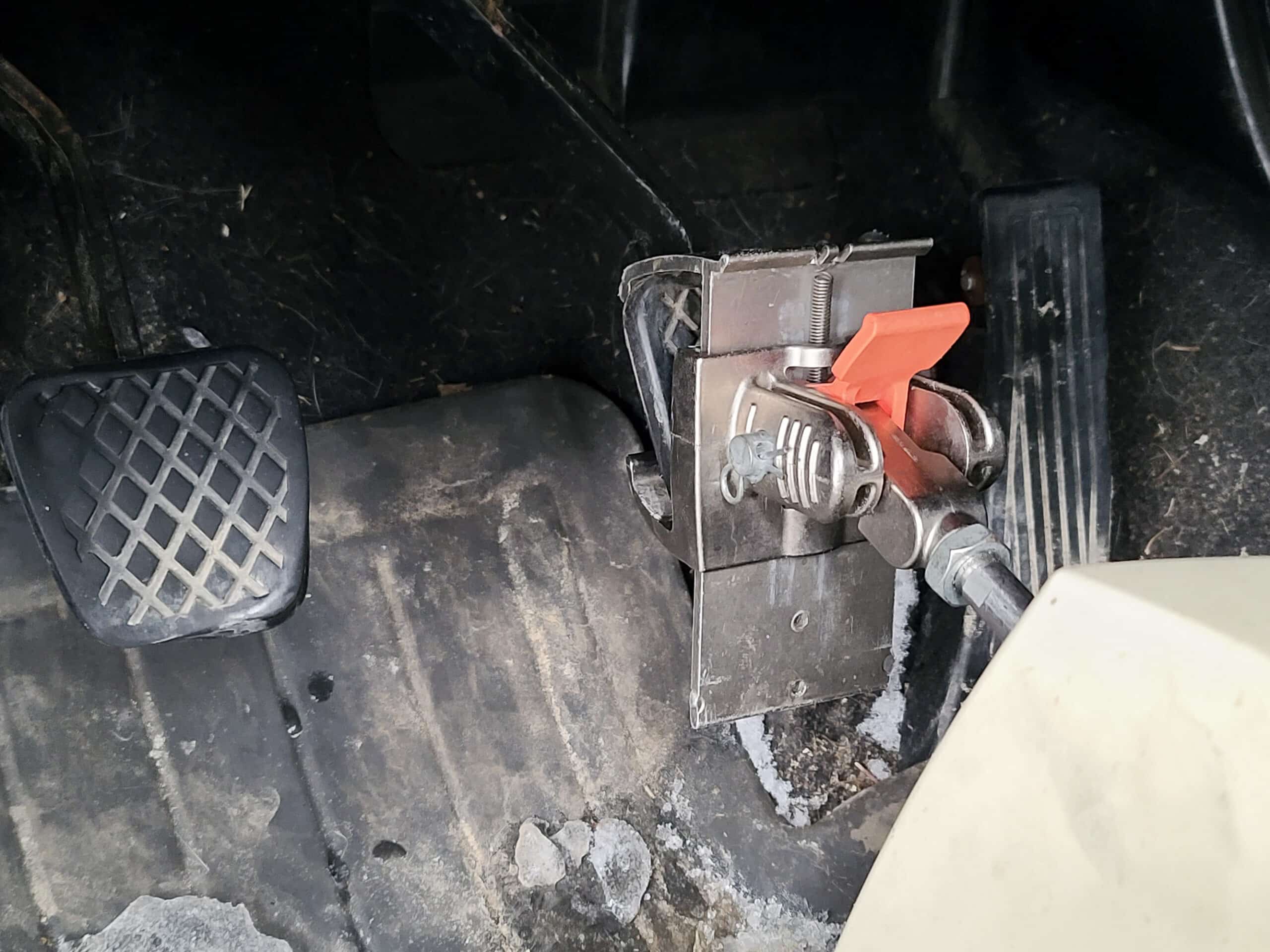
The device sits between the brake pedal and driver’s seat, waiting with a small tank of air and a pneumatic cylinder. It's connected to 12v power and connected to the breakaway switch.
If the tow vehicle becomes disconnected from the RV, the breakaway cable will get pulled out. This triggers the brake system to apply air force to the cylinder, which in turn applies brake pressure.
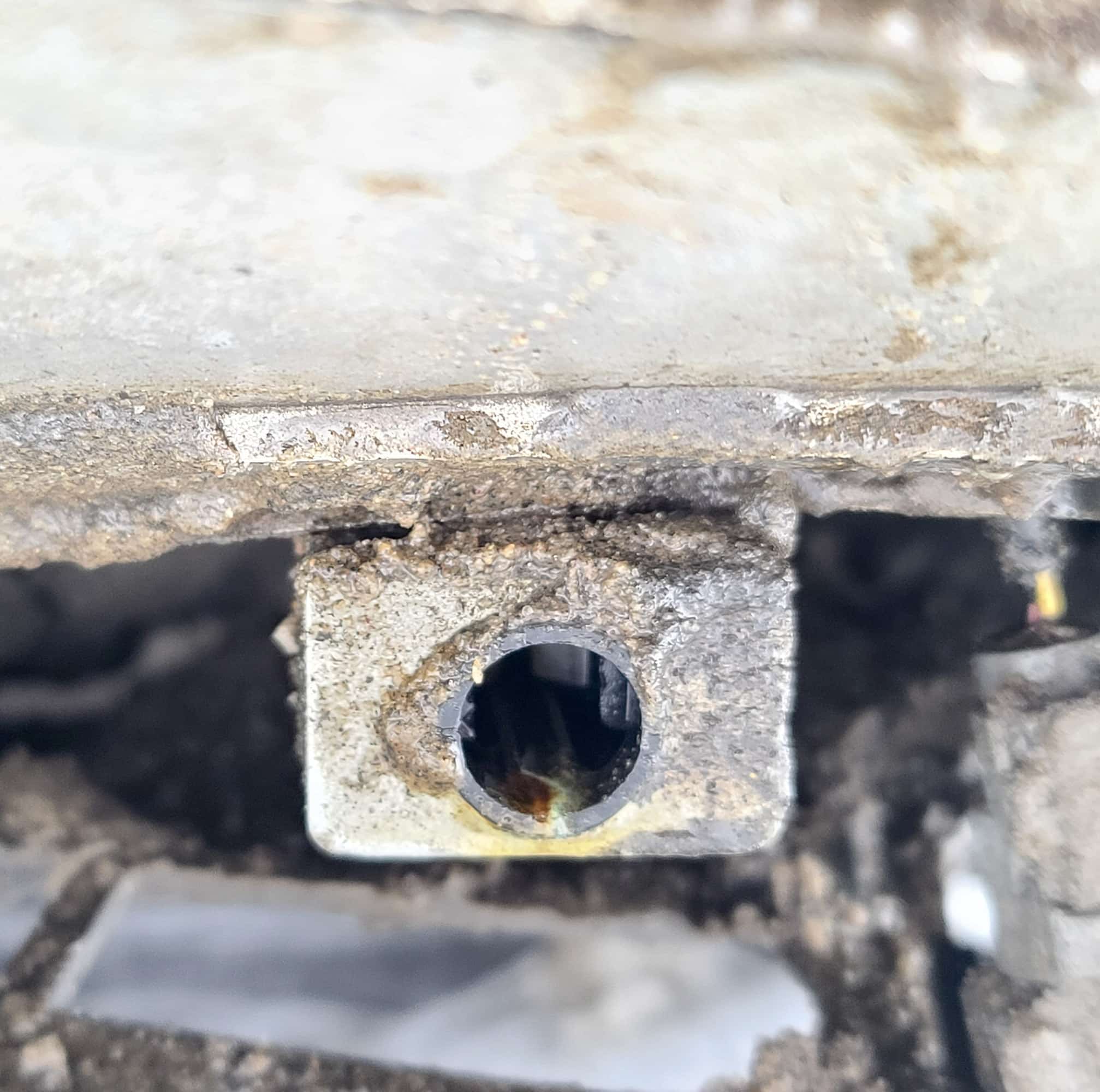
My system, a Brake Buddy, also includes an accelerometer in the system. This means when I hit the RV brakes hard, it will engage the braking system to help the rig slow down. I can adjust the sensitivity so this only happens during very hard braking, which I prefer.
Quick note: this might sound like air brakes, which you may have heard requires special licensing. That's not the case here.
There are no special licenses needed for a supplemental brake system. Your system still uses hydraulic brakes for the actual pressure to the braking force.
Why do I need a supplemental braking system for flat towing?
At first I just wanted to install a flat tow brake system to satisfy the law in my area. In Ontario, any flat towed vehicle over must have a 1360kg (about 3000 pounds) must have its own braking system. Always know the laws in the area you're travelling, but in general you'll need a supplemental braking system in the United States and all Canadian provinces.
My car has a manufacturer listed curb weight of 1313kg. I don't need a braking system for that, right? Wrong, I have my car loaded with extra gear and tools. It definitely weighs more than 1360kg.
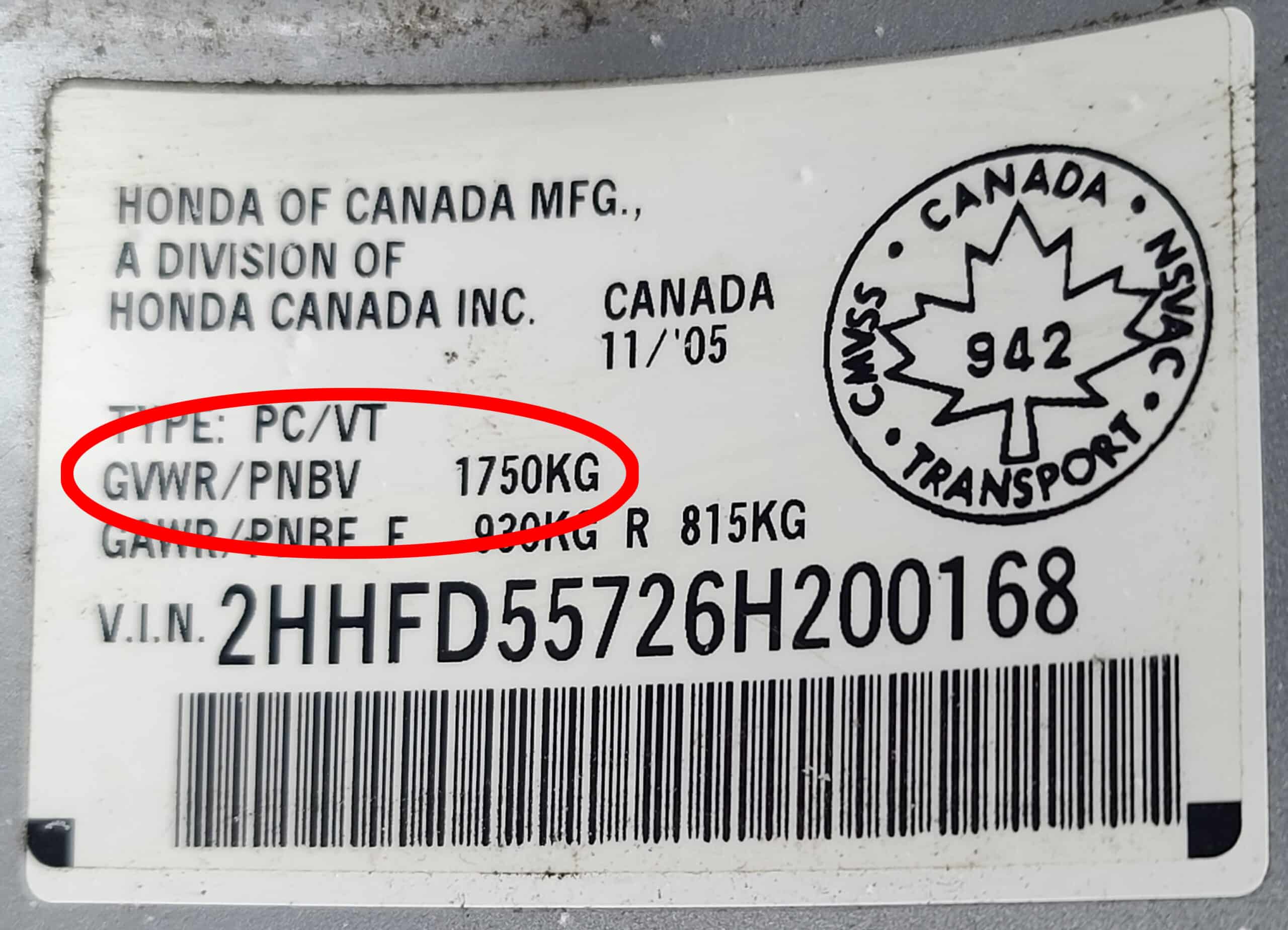
The last thing I want to deal with is being on the side of the highway with an officer telling me I cannot flat tow my vehicle. I'd be stuck, it would be a bad situation.
Now that I've used my setup, I really see the benefits. The benefit of having a breakaway system is obvious, but being able to activate the towed vehicle brakes is really quite handy. It makes me feel much better since I know I can make a safe stop in a much shorter distance.
Without a braking system for flat towing, my RV's brakes to do all the work, including that 1.5 ton car pushing in the back. With the braking system engaged, the car is actually tugging the rig slower, which makes a huge difference in stopping distance. More brake pads engaged, better stopping, it's as simple as that.
How does a flat tow braking system work exactly?
I mentioned above that the unit sits between the driver's seat and brake pedal. On my Brake Buddy there are two adjustments I can make.
First is the pressure. Higher pressure, more braking force. Lower pressure, less braking force. There's a handy guide to help you select the optimal pressure.
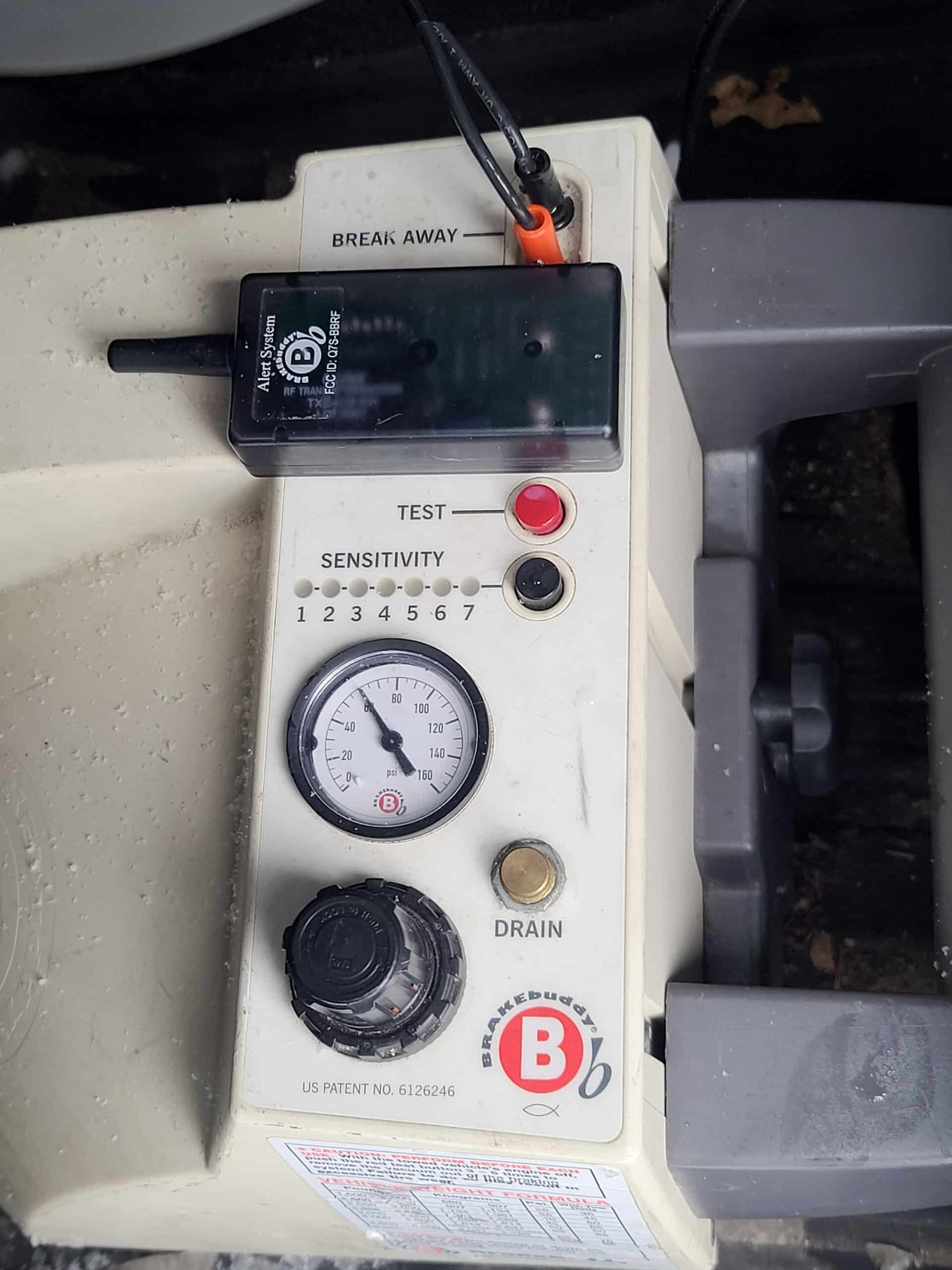
Next is the sensitivity. Higher sensitivity numbers means the brakes will engage more, lower numbers will only engage during very heavy braking.
The end of the cylinder hooks around the brake pedal. The 12v power and breakaway switch wires are connected. I like to wrap a little electrical tape around the 12v connection just to make sure it doesn't slip out on bumpy roads. A few quick test actuations and you're all set.
The breakaway switch on a flat towing brake system
What's that breakaway switch I keep talking about? It's a simple inexpensive pull switch that hooks up on your car, near your base plates. If the cable is pulled, it closes the circuit and the braking system engages. Super simple, super cheap, gotta love that.
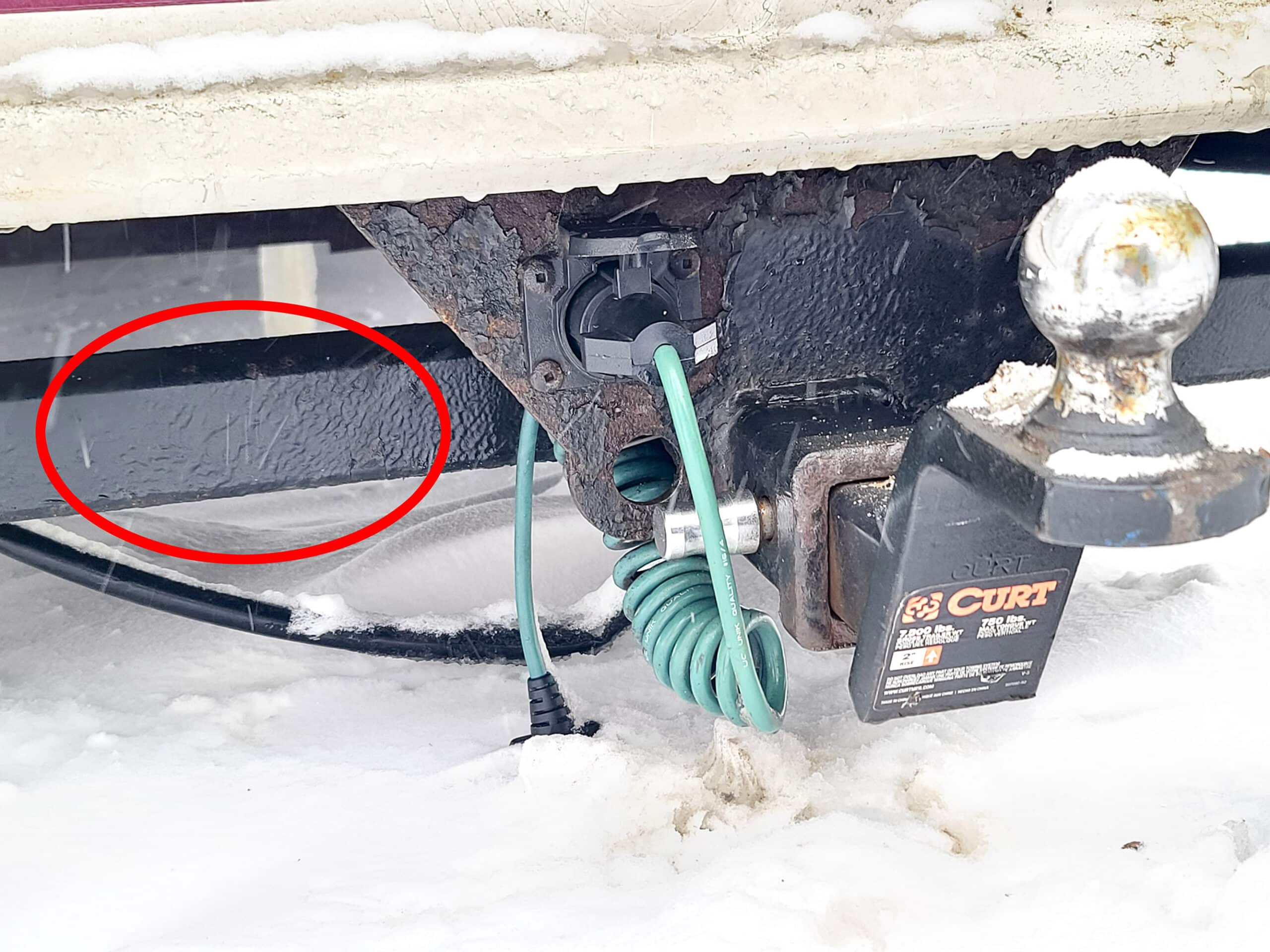
The hardest part is bringing those wires into the cabin area of the vehicle so they can be connected to the braking device. You might get lucky and find a spot where wires are already going through the firewall, where you can just poke the new wires along side of them. If not, find a clear spot and use a rubber grommet to make sure the sharp metal edge doesn't damage the wires.
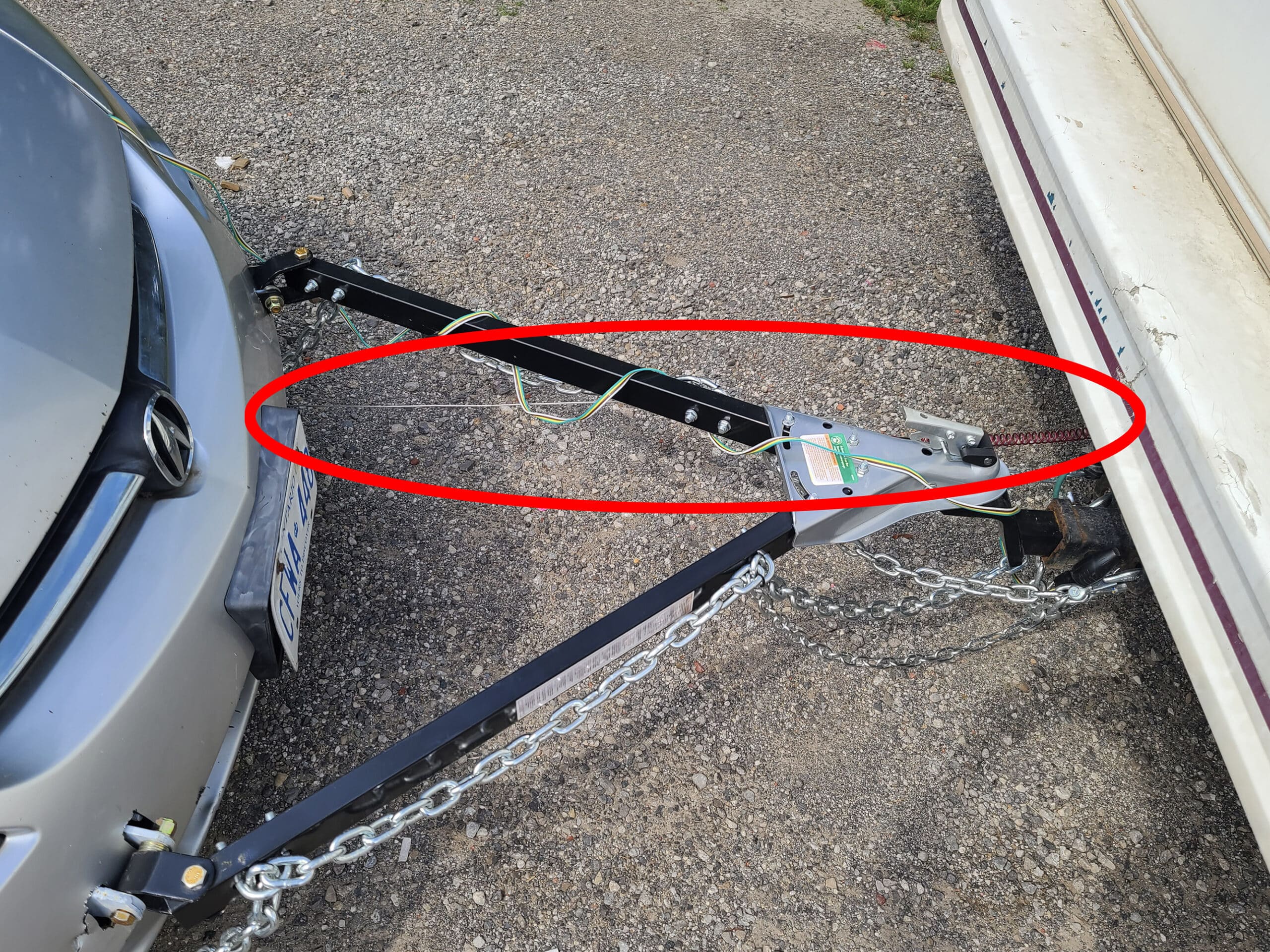
Power for your supplemental braking system
Just plug the 12v plug into your power port, right? Well, maybe.
There are two considerations. First is whether or not that power port is going to be on. In my car, the power port is off when the car isn't on. That would mean I would have to have the car enabled or running if I wanted to use that port. I don't want to risk draining the battery, so I don't want to do that.
The second consideration is how much power you'll draw. Some power ports are designed only for small devices. You could blow a fuse if you tried to use too much power. You can't simply install a larger fuse, that would pose a fire risk since the wires need to be sized to match the power.
When I fed the wires for the breakaway switch, I also fed new power wires. A simple 20 amp inline fuse and power port placed near the driver's foot was needed to make it a complete power setup. 20 amps is more than I'll need, but it doesn't cost much more, you don't want to blow a fuse and risk your system failing!
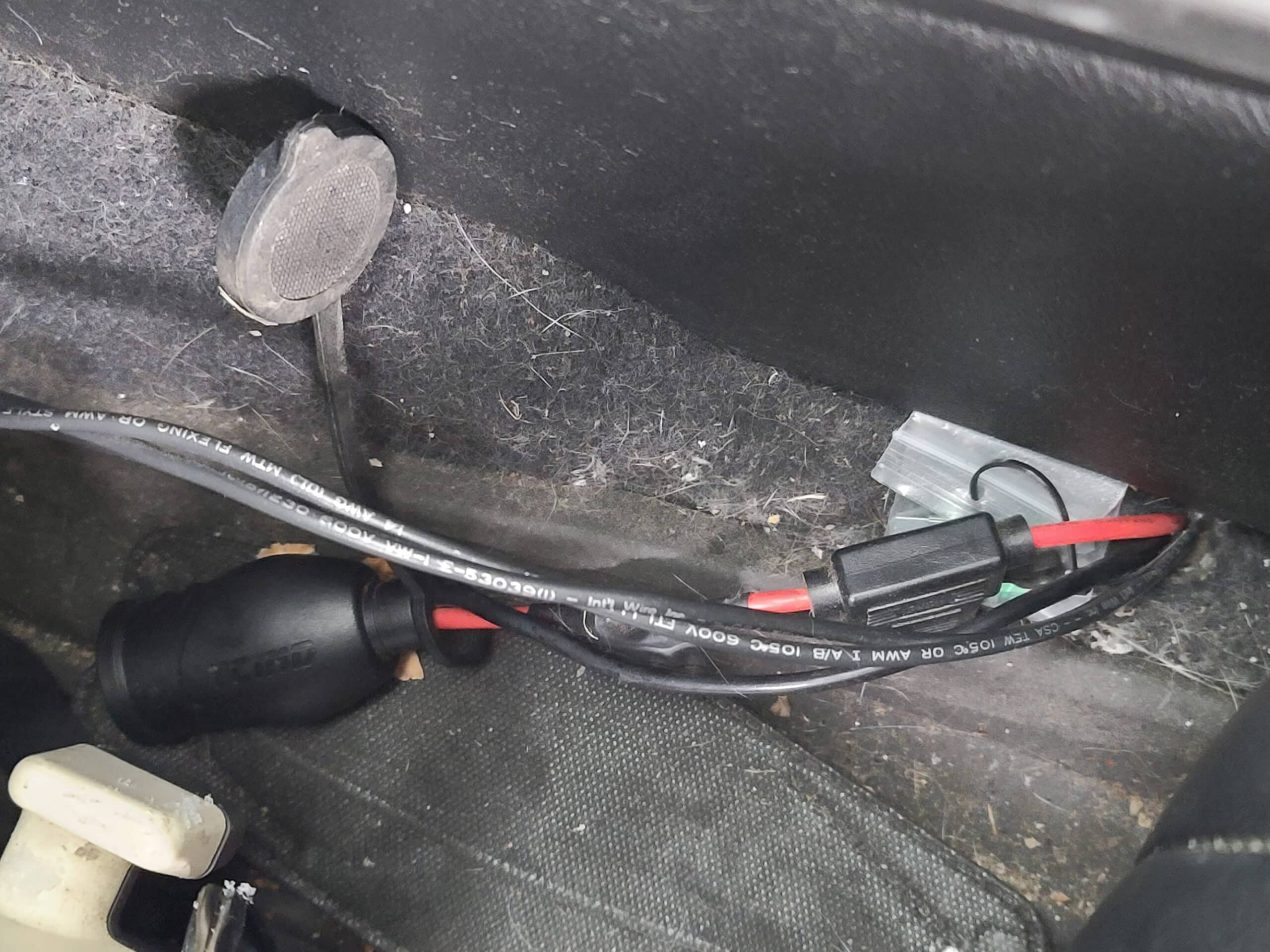
Another option is to pass power from your motorhome to your towed vehicle. The common 4-pin trailer connection doesn't allow for this, but most RVs will have a 7-way socket that can pass power.
You will still need to wire that up to your supplemental braking system though. It simply ensures you won't drain the battery on the towed car.
Other braking systems for flat towing
I've spent some time explaining how my specific Brake Buddy Classic works, but there are many other options on the market. These different options have some different features.
Some models are proportional systems which vary the amount of braking force on the tow car with the amount of braking force on the RV. This is a really nice feature, but of course adds cost.
One feature that I wish my model had is the ability to adjust braking sensitivity or force from the motorhome. For my unit I need to set this in the towed car, which means I cannot adjust it if I find myself on a steep grade.
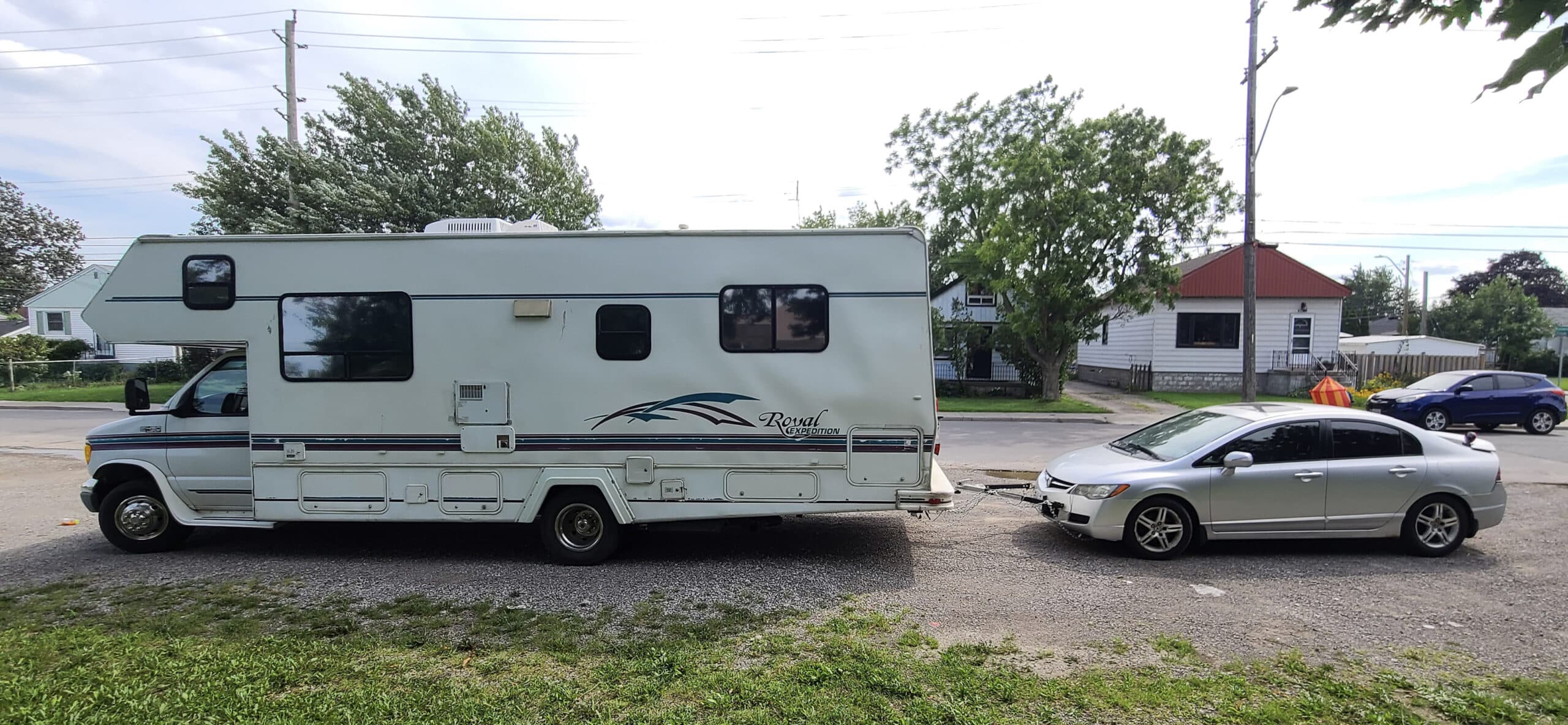
Brake Buddy has a stealth model that uses a wire and a pulley on the towed car. Once setup, there's no need to remove it or set it up again, it stays out of the way and you can drive with it in place.
Blue Ox Patriot is another popular brand with excellent features. Ready Brake is a surge break system that is completely mechanical. It applies the brakes to the towed car via a hitch adapter.
So many flat towing braking system models, which one do I pick?
It is not my intent to rate different units, this article is to explain what a braking system for towed vehicles does for you. I suggest looking into prices and features that are important to you.
For me, cost was important. I didn't think I really needed a braking system but my main reason for buying one was to comply with legal requirements. Now that I've used my unit for some time, I wish I had more features.
I'm considering upgrading to a unit that has proportional braking. I think it would be a big benefit and would make me feel better when driving.
The good news is that I can upgrade without a big financial penalty. These units are not a permanent system. They can be taken in and our of your car easily, right? Well just as easily as using it for different vehicles, it means I can sell my Brake Buddy and get a new proportional braking system quite easily.
Share the Love!If you’ve made one of our recipes, be sure to take some pics of your handiwork! If you post it to Bluesky, be sure to tag us - @2NerdsInATruck, or you can tag us on TikTok, if you’re posting video. We're also on Pinterest, so you can save all your favourite recipes and park reviews to your own boards! Also, be sure to subscribe to our free email newsletter, so you never miss out on any of our nonsense. Well, the published nonsense, anyway! |


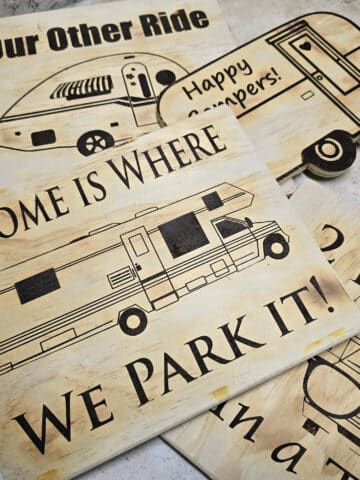

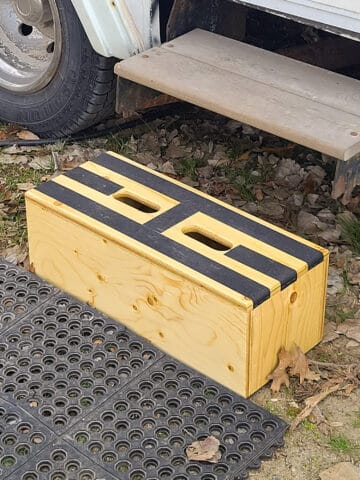
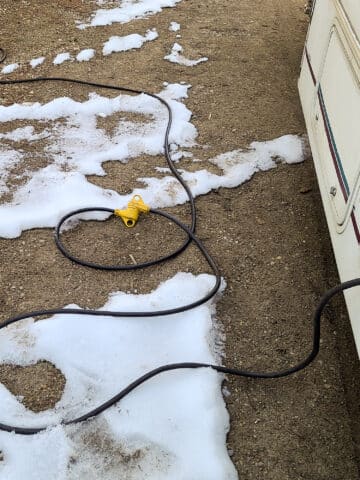
Leave a Reply